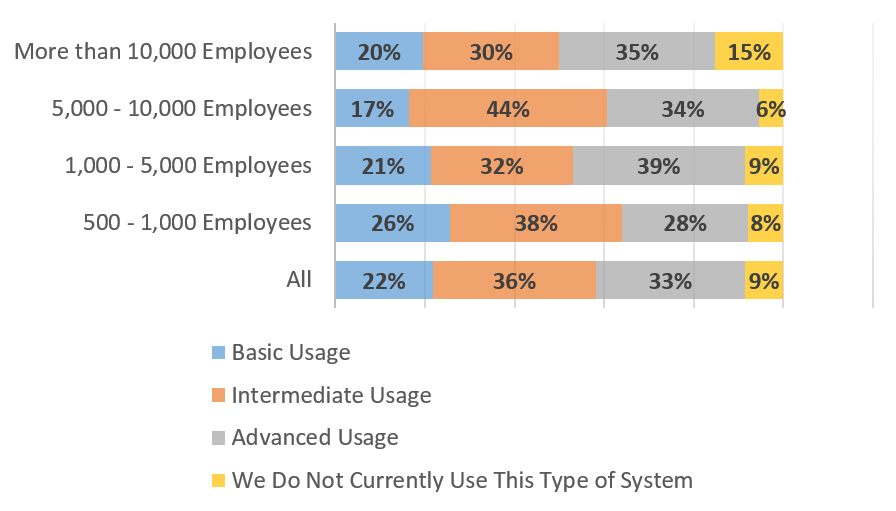A CMS is the Key to Delivering a Great Customer Experience

In our Digital Marketing Maturity Guide we provided a series of questions that asked respondents to rank their usage of various marketing systems, including Web Content Management (WCM/CMS). The chart below shows the results for the CMS category (the overall results from our survey can be found here). Interestingly, a large percentage fall into the Basic Usage and Do Not Use category.

In fact, across all employee sizes the average for this category was 30%. Organizations with more than 10,000 employees had the highest rank in this category at 35%, followed by organizations with between 500-1,000 employees. It is surprising that the 10,000+ segment has such a high percentage of basic/no usage and, even more interesting, their We Do Not Use percentage was also the highest at 15%. Given that it is common for large organizations to have 100s of domains it is astonishing that they are not utilizing a CMS.
A modern CMS is a key technology to drive overall business growth, attract and retain customers and help position organizations for digital transformation. According to a study conducted by Tech Pro Research, 67% of business leaders cite new and better technology as a top enabler that allows them to become more innovative. Conversely, companies that lag behind the curve often put the blame on antiquated tools, with 41% of executives listing outdated technology as the root cause of the problem.
In addition, as Cathy McKnight, an analyst at the Digital Clarity Group, stated, “Content, while it has always been a key component of a marketer’s court, its prominence and power notched up in rank when it became the central component of delivering upon the promise of a great customer experience. The new drive for Customer Experience has driven content beyond just a “nice way to market across a digital channel” and into perhaps the only differentiator that remains. This dependency on content, and WCM as the primary system of engagement (SOE), has propelled the power of WCM as king widening the gap between it and its courtesans.”
In the past, when websites were more like static brochures, organizations could probably get away with not having a CMS. However, today the majority of interactions take place across multiple digital channels, and customers demand a personalized and relevant experience regardless of location. Given these new expectations, it is now more urgent than ever that organizations of all sizes utilize the proper technology to engage people at the right time, in the right place and on any device. That is what a modern CMS can do, and it is why every organization needs to have one in their marketing stack.

Barrett Coakley
Barrett Coakley is the Senior Manager, Products Marketing for the Progress Sitefinity Content Management System (CMS) and the Sitefinity DEC, a digital marketing analytics platform. Mr. Coakley has worked in various marketing positions for both startup and large technology organizations for over 20 years.
